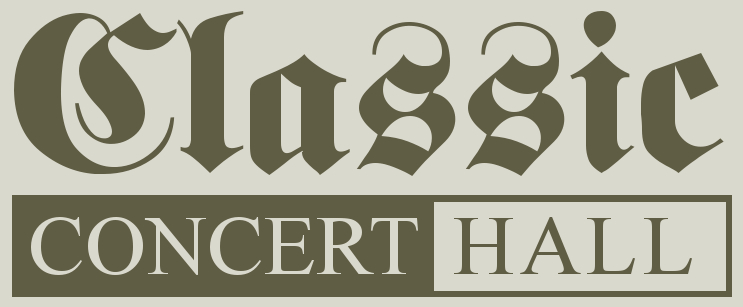|
 Ranked #3 in Most Commented. Ranked #3 in Most Commented.
Comments (17)
Comment on this music
Login/Register to post a comment.
|
Präludium in d
Uploaded by: Bartfloete
Composer: Seger, Josef Ferdinand Norbert Organ: Kdousov, 1787 S. Silberbauer Software: Hauptwerk VI Views: 57
Präludium (op. 69,1)
Uploaded by: mweyand
Composer: Reger, Max Organ: 1925 G.F. Steinmeyer, Berlin, Germany Software: Hauptwerk VI Views: 113
WEDDING MARCH
Uploaded by: musicalis
Composer: Verpeaux, Jean-Paul Organ: Mascioni, Giubiasco (2008) Software: Hauptwerk IV Views: 99
Fantasia in d
Uploaded by: Opus1405
Composer: Pachelbel, Johann Organ: Mascioni, Giubiasco (2008) Software: Hauptwerk IV Views: 88
|
Uploaded by:
|
NeoBarock (09/12/23)

|
|
Composer:
|
* My Own Composition 
|
|
Sample Producer:
|
Piotr Grabowski 
|
|
Sample Set:
|
Mascioni, Giubiasco (2008)

|
| Software: | GrandOrgue |
| Genre: | Contemporary |
| Description: | op.11 No.17
And my project continues, it has to if I want to be finished by Christmas .....
A flat major: what does Berlioz say about it? Ah, in terms of difficulty "not very difficult" and in terms of character "gentle, veiled and very noble" ..... Well, that may be true for string instruments but not for our well-tempered organ, and certainly not when we play on the beautiful instrument of the Mascioni organ in the Swiss Ticino. Speaking of strings .... the Mascioni organ has a beautiful violoncello in the Hauptwerk, which sounds just wonderful, especially in the lower notes .....
But now to the work. The Prelude is an Adagio that is to be performed very slowly. Despite its only 28 bars, the playing time is over 3 minutes. Basically it is a song, the upper voice plays a melody and the two voices below accompany this song. My wife says it sounds sad ..... and indeed minor sounds sad if you go up a fifth at a time and play minor instead of the expected major sound: F minor -> C minor -> G minor ..... In the middle section - more precisely in bars 13 and 14 - there is strong modulation or shifting. In bar 13, the bass moves chromatically downwards, in the following bar, the melody voice answers with a chromatic upward movement. In bar 16, the circle of fifths moves upwards and a semiquaver movement, present in all voices, moves from F minor to D minor. From bar 21, the recapitulation takes place and the piece fades away with an A flat in all voices.
Now for the fugue. It stands in absolute contrast to the Adagio. Allegro vivace. The theme is quite simple, and gets by with 2 bars. Basically, it is a triadic movement. Such motifs are very grateful and lend themselves excellently to compression or even expansion, as we will hear in the further course. The counterpoint of the theme is an upward movement that rises with the triads. |
| Performance: | MIDI |
| Recorded in: | Stereo |
| Playlists: |
|
|
Options:
|
 Sign up today to download piece. Sign up today to download piece.
 Login or Register to Subscribe Login or Register to Subscribe
 See what NeoBarock used to make this recording See what NeoBarock used to make this recording
|
| |
|
Attachments:
|
- Please Log in to download.
|
|
|



